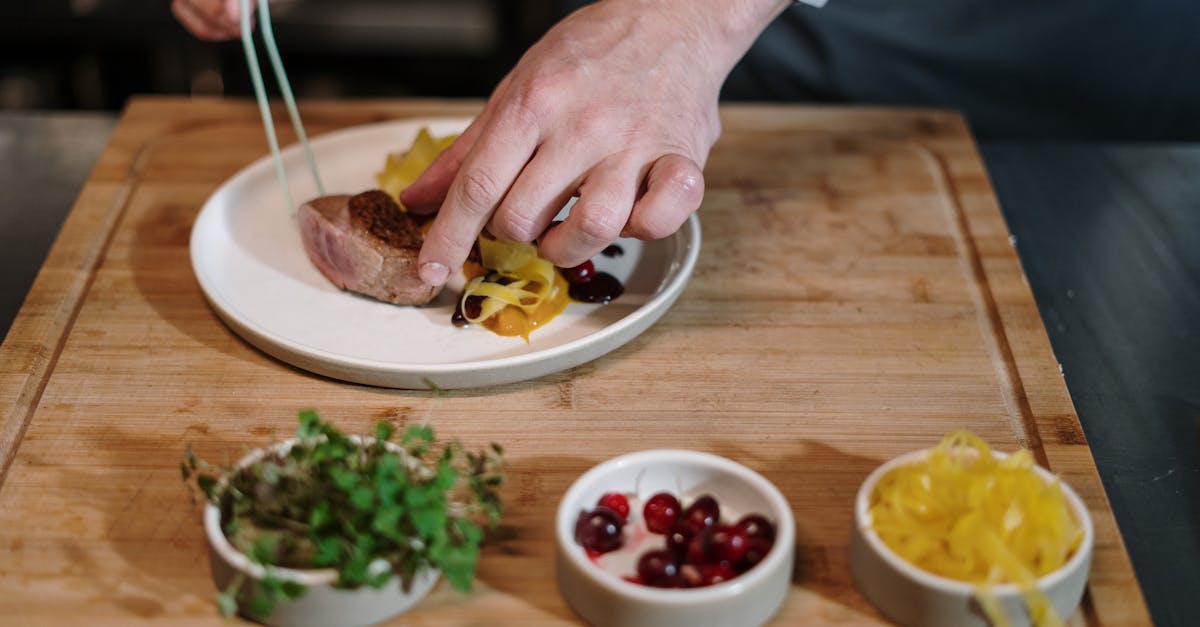
Introduction
Modern flavors gastronomy is redefining how we experience food, transforming ordinary meals into sensory adventures. As chefs blend tradition with innovation, they are creating dishes that tantalize taste buds and expand culinary horizons. This movement is characterized by a desire to push boundaries, using advanced techniques and unusual flavor combinations. The aim is not merely to satiate hunger but to create unforgettable dining experiences. With a growing emphasis on sustainability and cultural fusion, modern flavors gastronomy challenges conventions and introduces exciting possibilities. But what is driving this culinary revolution, and what impact does it have on the food industry?
The Art of Flavor Pairing
Artful flavor pairing lies at the heart of modern gastronomy, as chefs meticulously select ingredients that complement or contrast with one another. This technique goes beyond the traditional sweet, sour, salty, and bitter components, experimenting with umami and new flavor dimensions. By balancing textures and aromas, chefs create innovative dishes that surprise and delight diners. Scientific understanding plays a crucial role, with culinary professionals utilizing tools like flavor wheels and sensory evaluations to enhance results. These complex pairings enable a deeper appreciation of food, transforming meals into multisensory experiences that elevate the dining ritual.
Culinary Techniques and Innovation
Modern gastronomy embraces techniques previously confined to scientific labs, combining culinary traditions with molecular gastronomy and avant-garde methods. Tools like liquid nitrogen, foams, gels, and sous-vide transform textures and appearances, challenging perceptions of what food can be. This experimentation allows chefs to reshape classics or invent entirely new dishes catering to adventurous palates. Chefs also adopt "deconstructivism," breaking down dishes into individual components, altering how we perceive traditional flavors. By embracing novel methods, modern gastronomy bridges the gap between art and science, captivating curious food enthusiasts worldwide.
Sustainable Gastronomy Practices
Sustainability is gaining prominence within modern gastronomy, as chefs seek to balance culinary indulgence with environmental responsibility. This movement emphasizes locally-sourced, seasonal ingredients, minimizing waste and reducing the carbon footprint of food production. Modern gastronomy promotes ethical farming and encourages restaurants to adopt eco-friendly practices like composting and waste recycling. This approach resonates with diners who appreciate environmental consciousness, allowing them to indulge guilt-free. By advocating sustainable gastronomy, chefs are pioneering a culinary revolution that prioritizes the planet's welfare over temporary pleasure, reshaping the future of food consumption.
Ethnic Fusion and Global Influences
As globalization enriches cultural exchange, modern gastronomy embraces ethnic fusion, artfully blending diverse ingredients and culinary traditions. Inspired by the plethora of international cuisines, chefs are experimenting with unconventional pairings, creating dishes that transcend geographic boundaries. This fusion approach allows them to honor their roots while reimagining conventional recipes, leading to bold, exotic flavors that surprise and excite diners. As a result, modern gastronomy introduces new culinary stories, inviting individuals on an epicurean journey across different cultures. This phenomenon fosters appreciation and understanding of global diversity through shared dining experiences.
Plating as an Artistic Expression
Modern gastronomy elevates plating to an art form, where chefs view dishes as canvases for creative expression. Visual presentation plays a vital role, enticing diners before their first bite. The composition of colors, shapes, and textures not only enhances aesthetic appeal but also elevates overall dining satisfaction. Unusual elements, such as edible flowers or dustings of spices, contribute to visual impact while offering bursts of flavor. This fusion of art and cuisine creates an immersive experience, captivating both the eyes and palate. By embracing artistic plating, chefs invite diners to embark on a sophisticated gastronomic odyssey.
Technology and Data in Culinary Art
Technology has transformed modern gastronomy, as chefs leverage data and innovation to refine their craft. Digital tools enable chefs to experiment with precision, optimizing cooking times, temperatures, and flavor pairings. Apps and interactive platforms foster creative collaborations, connecting culinary professionals across the globe. The integration of 3D printing and AI further revolutionizes preparation methods, customizing meals to individual preferences. Through technology, chefs transcend traditional confines, pushing boundaries that redefine culinary possibilities. With a keen eye on emerging trends, technology ensures that modern gastronomy continually evolves, adapting to, and shaping consumer expectations.
The Transformative Role of Tasting Menus
Tasting menus offer an intimate glimpse into modern flavors gastronomy, allowing diners to experience a chef's culinary vision. These curated journeys highlight innovation and creativity through meticulously chosen dishes, showcasing the chef’s expertise and exploration of flavors. Tasting menus captivate by introducing diners to new tastes and techniques within a single meal, challenging conventional dining. They prioritize storytelling, as each dish unfolds a chapter in an epicurean narrative, enhanced by wine pairings or unique beverages. Tasting menus cultivate appreciation for modern gastronomy while emphasizing a chef's narrative, inviting guests on an immersive culinary adventure.
The Rise of Plant-Based Cuisine
The modern flavors movement also embraces plant-based cuisine, championing innovation driven by health, ethics, and sustainability. Inspired by diverse flora, chefs create vibrant dishes that mirror meat-based counterparts in flavor and texture, often using ingredients such as jackfruit, tofu, or legumes. This culinary shift encourages creative experimentation while accommodating veggie-focused diners. Whether crafting comforting classics or exotic fare, plant-based gastronomy offers endless adaptations. Its popularity coincides with health-conscious trends, urging chefs to explore untapped vegetable potential. By embracing plant-based cuisine, modern gastronomy celebrates both innovation and compassion, aligning gastronomy with mindful eating.
Conclusion
Modern flavors gastronomy is defining a new culinary era, where art, science, and sustainability intersect. Through thoughtful flavor pairings, innovative techniques, and cultural fusion, chefs are redefining what it means to dine. With technology shining a spotlight on culinary craftsmanship, modern gastronomy weaves flavorful narratives that surprise and delight. As the movement evolves, it embraces environmental consciousness and global influences, advocating for a sustainable, diverse future. Ultimately, modern flavors gastronomy offers not just meals, but an invitation to experience the exceptional—the symbiosis of taste, culture, and innovation.